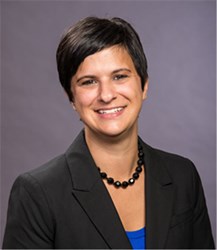HDMA Conference Examines A Holistic Approach To DSCSA Preparation
By Trisha Gladd, Editor, Life Science Connect

As the first Drug Quality and Security Act deadline approaches, pharma professionals around the globe are offering insight and advice in order to help with preparation for this legislation. While any Google search will return pages of helpful articles, the most beneficial information will be offered in real time at conferences and seminars arranged by industry organizations. One example of this is the 2014 Healthcare Distribution Management Association (HDMA) Education Traceability Seminar taking place in Arlington, VA from November 10th to the 13th. According to its site, the seminar will “include valuable insights, innovative approaches, and lessons learned as distributors and manufacturers successfully implement serialization and traceability technologies.”
 |
| David Colombo, Director of Technology and Process Integration at KPMG |
David Colombo, director of technology and process integration at KPMG, along with Mary J. Woods, executive director of US order management at Actavis, are scheduled to present “Lessons Learned from DSCSA Implementation: People, Processes, and Technology.” According to Colombo, despite the fact that the main focus of the DSCSA has been on the technical aspects of sending the transaction history, information, and statement (TH, TI, TS) to trading partners, compliance with this law involves quite a bit more. “The goal of our discussion is to think about how this law impacts not only the IT system for passing the TH, TI, TS, but also from a holistic approach—how it impacts organizational roles and responsibilities, your quality management system or standard operating procedures (SOPs), and any type of training needs that result from that,” explains Colombo.
People, Processes, And Technology
When it comes to the people aspect, he says this involves examining how communication with internal functional areas will be affected, as well as supply areas and trading partners. The key to keeping this successful is identifying and involving the relevant stakeholders and trading partners (from those you purchase from as well as supply) and then thinking about the ownership of processes. “You have to educate people, but then you also have to enable them to make the right types of decisions,” explains Colombo. “You start broadly across the organization in order to establish the right level of awareness of the project and its objectives. Next you funnel down into the right size and number of people, who actually are going to have the knowledge to make decisions and drive forward, and finally communicate back out again through the organization with the conclusions, the training, the rollout plan, et cetera.”
On the process side, he encourages companies to look at existing internal ones that address the DSCSA requirements, such as for quarantines, for reporting to the agency, and for dealing with counterfeit and/or suspect inquiries. Organizations should ask themselves questions like—If and how should those processes be adjusted? Who are the types of people that need to be involved in making a decision and owning the process? What are the immediate short-term changes needed to minimize efforts prior to January 1st, 2015?
In regard to technology, Colombo and Woods plan to discuss lessons learned around clearly understanding the master data requirements, impacts to existing system applications and configurations, and trading partner testing approach. “Ask yourself—what are the contingency plans you want to assemble and what kind of use cases should be considered?,” says Colombo about the questions they want to present to the audience. “Then, what will the organization define as the system of record or truth source that's going to be used to support an investigation or inquiries to the organization?” He says identifying the answers to important questions such as these is vital to preparation, so you don’t have to go back and revisit decisions from which you’re building a solution.
Don’t Overthink It
Overall, it’s the strength of the collaboration between both your internal and external team that will make or break your project. Getting people across the organization consistently engaged and on the schedule will be a challenge, as well as influencing everyone to work together with the same sense of urgency, coordination, and schedule adherence in order to execute efficiently. In KPMG and Actavis’ case, consistency, teamwork, and communication are key elements that kept everything moving forward. Colombo points to Woods, KPMG’s business partner and key stakeholder for Actavis’ DSCSA project, and her proven ability to communicate and interact with customers as a lifeline for the success of implementing changes through the project.
However, he adds, be confident with what you’re doing and stick to it. “Keep this simple and to keep it grounded to whatever exists and don’t overthink it,” says Colombo. “The whole purpose of this is to make it more difficult for rogue players or product to get into the legitimate supply chain while balancing the requirements for companies who are operating legitimately in this space.”
